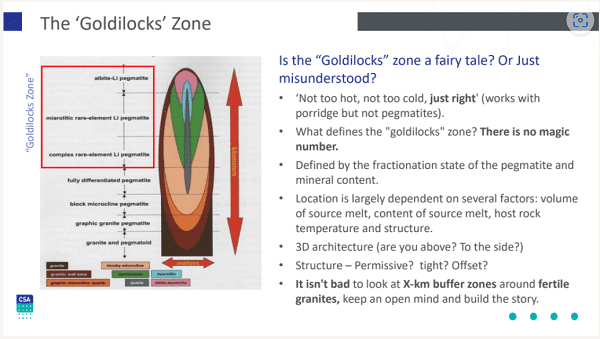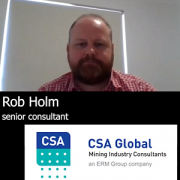CSA Fractures the Lithium Goldilocks Zones Fairytale
THE CONFERENCE CALLER: CSA Global Mining Industry Consultants associate partner Ian Stockton shared some tips for Western Australian lithium hunters on the final day of the 2023 RIU Explorers Conference. By Ngaire McDiarmid
He noted exploration for lithium had increased dramatically in recent years in line with the move to electrification and the demand for lithium-ion batteries, creating both supply and exploration challenges.
“We cannot recycle our way out of the shortage,” he said.
“Lithium mines are limited, production is constrained … therefore lithium production needs to catch up with current demand, which can only happen through exploration.”
However, the lithium knowledge base was relatively new for the broader exploration community, making it a steeper learning curve for geologists in the field “which is also quite exciting,” Stockton said.
Drawing on his circa 30 years of experience and input from the CSA team, including principal geologist Ralph Porter, Stockton said greenstone belts were better hosts of lithium than granites or granite gneiss in WA due to greater permeability.
“Beware – pegmatites are very common,” he said.
“In your tenement less than five per cent of your pegmatites may contain minerals of interest and less of these may be large enough to exploit, so therefore it’s important to quickly and accurately target only the most prospective pegmatites.”
The rock temperatures at the time of melt generation were important as it impacted how far the fractionated pegmatite melt could move away from the source granite, he explained.
Stockton spoke of a “Goldilocks” zone – not too hot, not too cold but just right – that worked with porridge not pegmatites.

“There is no magic number,” Stockton said.
“So, keep an open mind and build the mineral system – the pegmatites do come in all shapes and sizes.”
As for whether source rocks were fertile or barren, Stockton’s technical advice included saying using the potassium-rubidium ratio [K/Rb (<30)] was “fairly robust” for identifying potential mineralised pegmatites.
“Fractionation is a relatively simple, but effective approach,” he said.
“Finally, there’s no substitute for time on the ground.”





